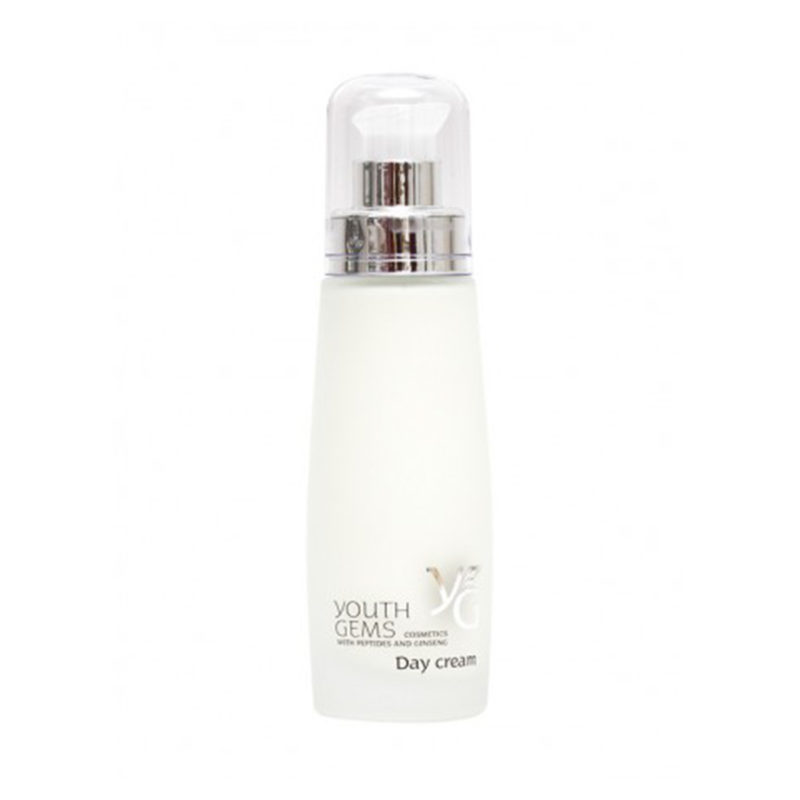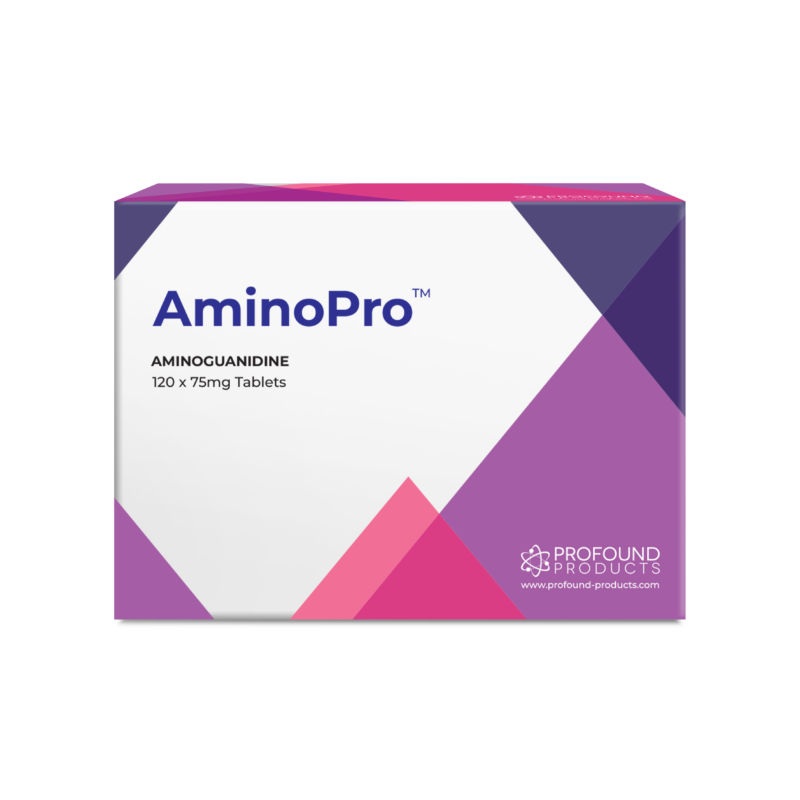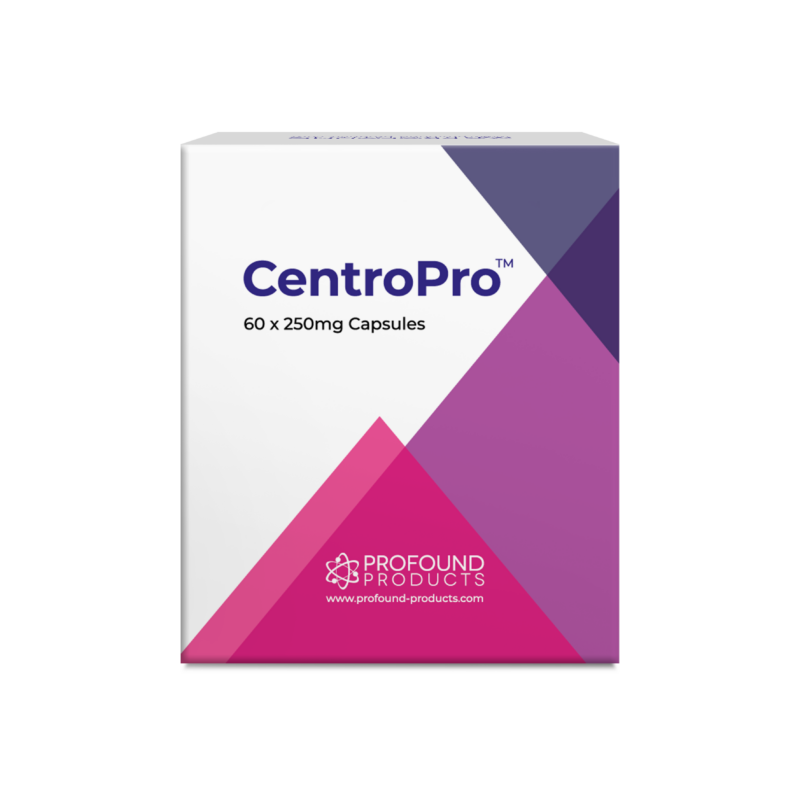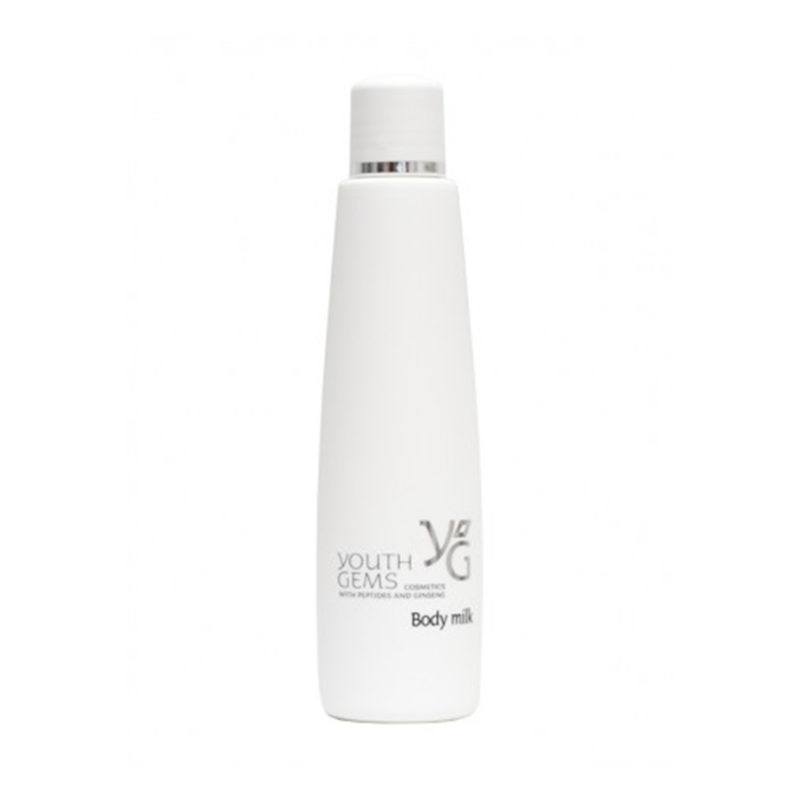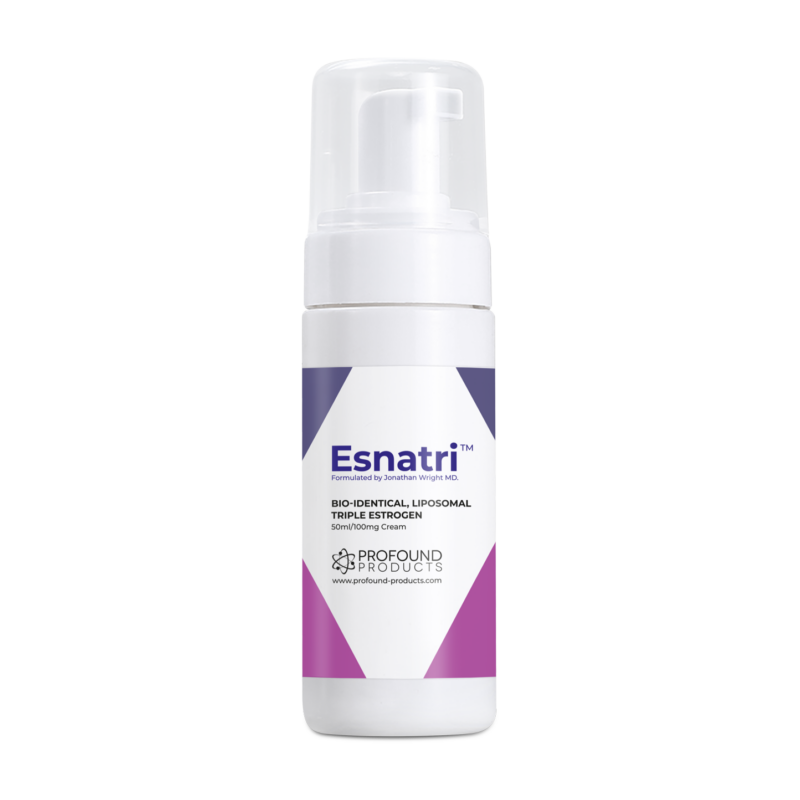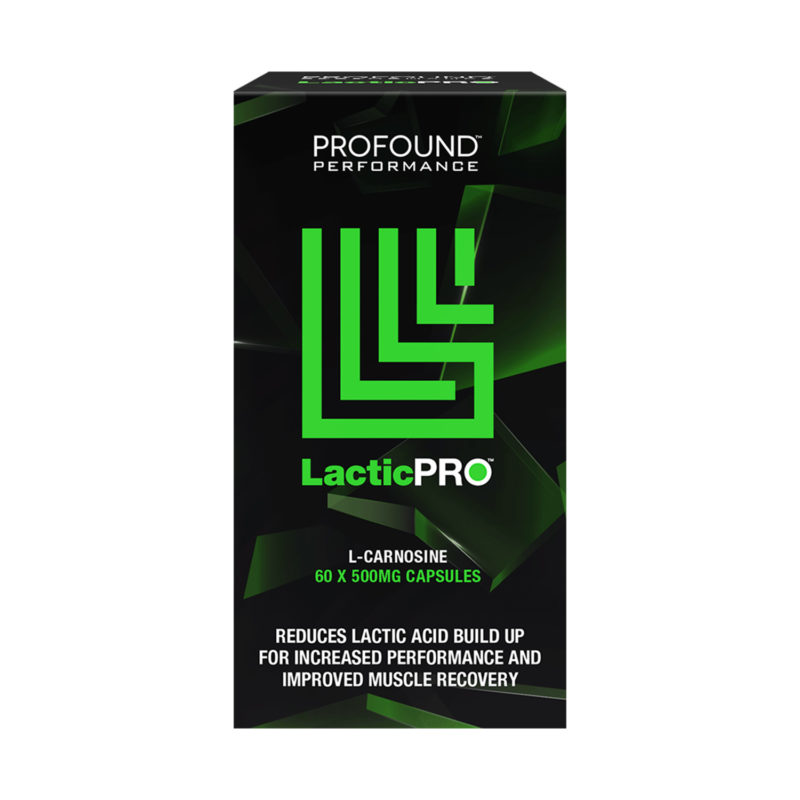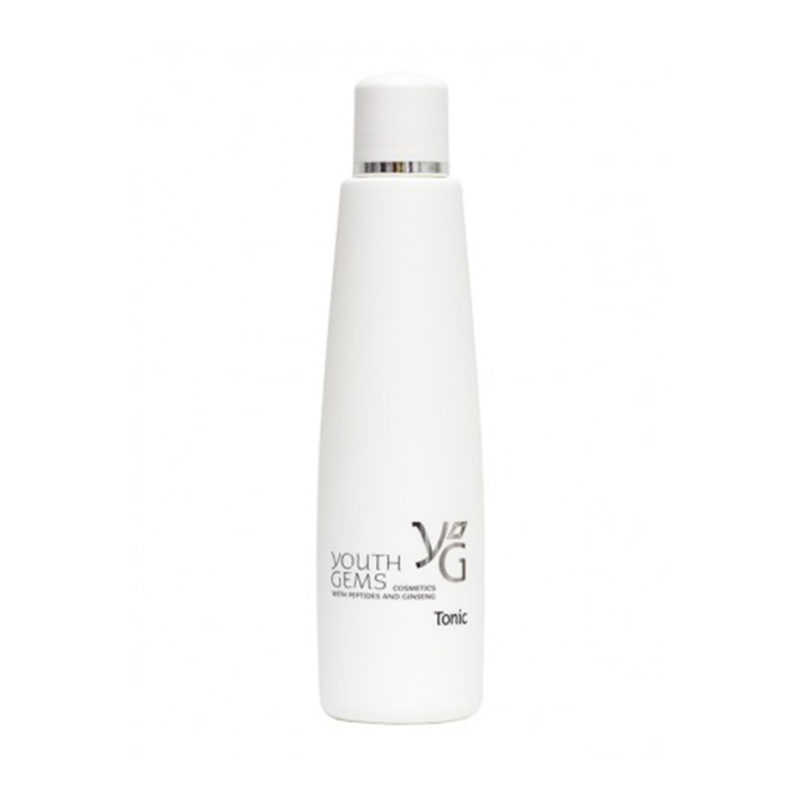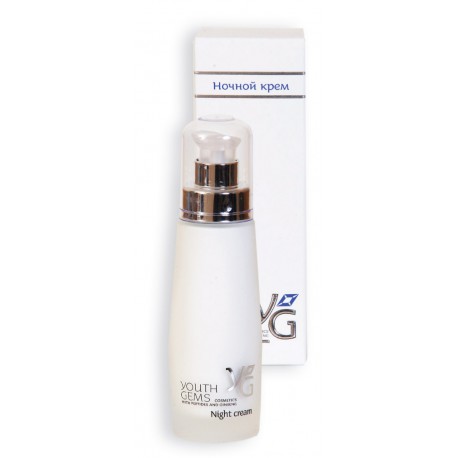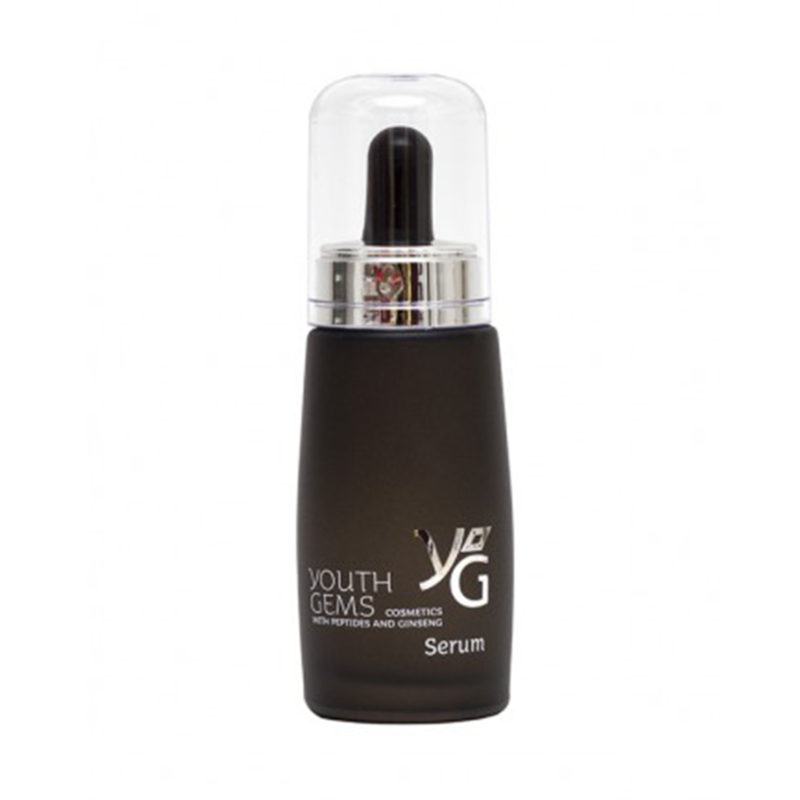Skin Aging: When the dimples become wrinkles
While all components of the skin are affected by age without exception, some segments are more vulnerable than others. It is well accepted that components of the skin age at different rates and in different degrees. This is because of individual genetic variations, (mosaicism) which are superimposed upon variable external factors and influences such as sun exposure, diet and pollution (1). For example, the skin under the eyes may appear wrinkled and aged compared to the skin on the cheeks. And hair, which depends on the overall age of the skin, may be black on the crown of the head and grey at the temples, giving an impression of a non-uniform appearance.
The skin is the largest organ in the body covering an area on average of about 1.49 square meters. Its main aim is to protect the body from insults originating from the external world. Another function is to provide sensory information about temperature, touch, pain and vibration signals. Finally, the skin is also a secretory organ which eliminates toxins through perspiration.
Components of the skin
The epidermis is the outermost layer of the skin which protects the skin against insults or injuries. When it comes to treatment, the problem is that it may be difficult for nutrients and pharmaceutical agents to penetrate the epidermis, and reach the inner parts of the skin. Scientists have invested a great deal of research in finding effective ways of delivering nutrients where it matters, deep into the skin. Liposomes are one such way, making use of tiny particles surrounded by lipid molecules which are able to penetrate the outer layers of the skin, carrying the nutrient or other chemical with them.
The main constituents of the dermis, (the inner layer of skin) are collagen and elastin. The collagen and elastin infrastructure keeps the skin resilient, elastic and firm. Collagen fibres are strong protein molecules which form a scaffolding to support other skin structures. Elastin fibres also form a mesh or net allowing the skin to maintain its elasticity and firmness. These two types of molecules can be considerably weakened by age-related processes such as glycosylation and oxidation. Photo-damage, i.e. damage caused by the ultraviolet (UV) radiation of the sun is also a major cause of collagen and elastin destruction.
Apart from the collage/elastin network, other components of the dermis are cells (such as fibroblasts), fatty tissue, nerves, blood vessels, sweat glands, hair follicles and sensory structures. A major component is the intracellular matrix. This is formed by proteoglycans, a mixture of protein/carbohydrate molecules surrounded by water. The main functions of the intracellular matrix are to facilitate the nutrition of the various skin components and to protect the skin against external insults. The fluid nature of the intracellular matrix gives the skin its plumb, youthful and rounded appearance. Within the matrix, moisture is retained by various substances such as sodium pyrolidone carboxylic acid (NaPCA), a natural moisturiser. The problem is, the concentration of NaPCA diminishes with age and this causes progressive loss of moisture from the skin. However, the aging of the skin is a complicated process involving several interrelated factors.
How age affects the skin
Strictly speaking, there are two types of skin aging. The intrinsic (chronological) aging accounts for about 10% of all skin aging and is characterised by thinning of the skin, loss of elasticity and a decreased metabolic activity. The other 90% of skin aging happens as a result of photoaging which causes damage to the skin followed by an exaggerated repair reaction resulting in collagen and elastin degeneration, dilatation of the small vascular vessels, deposition of abnormal elastin and collagen, and increased skin pigmentation (2). Intrinsic skin aging is due to genetic factors and endogenous influences such as oxidation and glycosylation, whereas extrinsic aging is due to external factors such as UV radiation, stress, pollution, and other environmental insults.
Free radicals are the main culprits commonly implicated in causing skin aging. Oxygen and nitrogen free radicals are produced by cigarette smoking (3), environmental pollution, less than adequate nutrition, pesticides and other chemicals in the food, and most importantly, from the UV action upon the skin. When UV radiation interacts with the skin, it produces an excessive amount of free radicals which destroy collagen, elastin and other proteins in the skin. UV radiation also interacts with the DNA inside skin cells causing further damage by allowing faulty DNA to replicate. In this way, imperfect DNA transcription and defective protein formation is perpetuated.
Chromophore skin cells are specialised cells which absorb much of the UV radiation (4) but, with age, their activities diminish resulting in more UV radiation reaching the inner parts of the skin. The result, following years of this process, is that the skin looses its moisture and support, appearing less shiny, wrinkly, droopy and with other imperfections. The risk of skin cancer is also considerably increased.
Skin glycosylation
When glucose or aldehyde molecules interact with skin proteins they may form glycosylated proteins, which are generally more susceptible to damage caused by free radicals. A glycosylated protein may interact with another glycosylated unit causing cross-linking, which is an irreversible union between two molecules. In this way neither of the molecules is free to perform its ordinary functions, and this contributes to the overall damage. An additional problem is that the cross-linked unit may then interact with other oxidised molecules, (following action by free radicals) resulting in large and harmful molecules called AGEs (Advanced Glycosylation End-products). These perpetuate the damage to the skin collagen, elastin and intracellular matrix, and increase the death rate of the fibroblasts through apoptosis.
AGEs are very potent stimulators of apoptotic pathways resulting in cell death. Apoptosis is a process of orderly cell suicide, which normally aims to eliminate damaged and useless cells, and leave space for new and healthy cells to develop. However, apoptosis may be accelerated by a wide number of factors, and AGEs is one of them. AGEs stimulate several pathways leading to the formation of digestive proteins, (caspases) which attack healthy proteins within the cells and decompose them. As a result, the cell becomes irreversibly committed to die. Normal rates of apoptosis are useful in organs with a high turnover of cells such as skin, liver and bowel, but not so useful in organs with a low cell turnover such as the brain, muscle and bone. But aging causes increased rates of apoptosis, (and one mechanism is via the production of AGEs mentioned above), so it is necessary to control and modulate the apoptotic rates otherwise too many cells will die and the skin structure will be compromised.
Glycosylation may also be caused by other toxic by-products such as malondialdehyde and methylglyoxal. These are involved in lipid peroxidation, the destruction of healthy lipids by free radicals. In addition to the above, glycosylation is connected with various inflammatory pathways. For example, glycosylated material interferes with mitochondrial function which, in turn, stimulates production of inflammatory chemicals such as tumour necrosis factor (TNF) and nuclear factor kappa b (NFkB). These inflammatory agents attack other skin cell material resulting in chronic skin micro-inflammation, which not only makes the skin appear red, rough and itchy but contributes to wrinkles and skin blemishes (5). So, the combined action of oxidation, glycosylation and chronic inflammation results in the visible signs of skin aging such as wrinkles and rough skin.
Other age-related changes to the skin include:
- The formation of age-spots, which are the result of lipofuscin accumulation.
- Increased likelihood of skin cancer such as melanoma and squamous cell carcinoma.
- Thin and easily fragile skin, with easy bruising, deformed capillaries and varicosities.
Apart from the visible sings of aging, there are other less visible changes. For example, the sweat and sensory elements of the skin become affected with age. Sweating becomes more problematic and less effective. As a consequence, elimination of toxins from the skin declines, and toxins may thus accumulate in the body. An exception to this is the increased sweating sometimes experience by menopausal women, which is hormone-related. The sensory organs of the skin become less sensitive, and information about outside temperature, touch, pain and stretching becomes less reliable.
Preventing and Treating skin aging
One therapy receiving increased scientific interest is pulsed light therapy. This technique (called IPL- Intense Pulsed Light) makes use of broad spectrum flash lamps, (500-1200 nm) being targeted directly on the skin in order to reverse certain age-related skin changes. Scientific results show that patients undergoing IPL treatment show improved skin health parameters (6). The pulsed light targets chromophore cells reversing abnormal age-related pigmentation, and improves blood vessel appearance. This dermal remodelling is achieved by a direct action of the light upon the skin, and also by modulation of cytokines which are involved in skin inflammation (7).
In order to prevent or even reverse free radical skin injury, there has been considerable research into the effects of topically applied antioxidants (8). The skin has several quite effective protection mechanisms aimed at preventing externally-produced free radicals. The epidermis is covered in a layer of sebum mixed with lipids forming a complex structure known as SSL (Sink Surface Lipids). These protect the underlying skin against free radicals attaching to the skin from the outside. Research shows that the composition of SSL changes with age. Mature adults have a higher concentration of branched mono-unsaturated fatty acids compared to older people, meaning that the healthy concentration of protective fatty acids is compromised in old age. In addition, the concentration of antioxidants within the lipid barrier also changes with age. Antioxidants such as vitamin E, squalene, and co-enzyme Q10 significantly decrease in older individuals (9).
Coenzyme Q10 and Idebenone
Studies show that co-enzyme Q10 applied directly on the skin helps reduce the appearance of wrinkles and fine lines. It also promotes repair of fibroblasts (10). But after the age of 30-35 the body becomes less able to create enough co-enzyme Q10 to meet its energy needs. This is made worse by bad eating habits, stress, infection or certain drugs. Co-enzyme Q10 can significantly suppress the expression of collagenase, an enzyme which destroys collagen. In addition, it can penetrate the outer layers of the skin and exert antioxidant benefits deep in the dermis (11).
Idebenone has a chemical structure similar to that of co-enzyme Q10 but it is believed to be a more effective and stronger variant. Idebenone is an effective antioxidant, 400 times stronger than vitamin E and it has been used not only as a skin rejuvenator but also as a brain protector and heart nutrient. Combining topical co-enzyme Q10 with other known antioxidants such as vitamin E together with RNA extracts, (which help maintain the skin’s own DNA) is an effective way of assuring an all round skin protection. [Ed.- NeySkin ® cream is specially designed to provide all those factors that Dr. Kyriazis mentions above, including CoQ10, RNA extracts and vitamin E, CoQ10 and other factors are also contained in the newly formulated Energo ® cream by Professor Ionescu – further details are contained in his article in this Bulletin].
Vitamin E and pycnogenol
These have good antioxidant actions, help improve the immunity of the skin, and aid the repair and regeneration skin process. Pycnogenol is the extract of Maritime Pine bark. It has anti-inflammatory, antioxidant and capillary stimulation effects. Due to its molecular structure it can penetrate easily through the epidermis and reach the deeper dermis. Sometimes these antioxidants are combined with ginkgo biloba, which is the extract of the Maidenhair tree. Ginkgo improves microcirculation, prevents vascular imperfections and acts as an antioxidant.
Aminoguanidine
Due to the important role of glycosylation and cross-linking in causing skin aging, researchers are interested in agents which can inhibit, modulate and control glycosylation. One such agent is aminoguanidine. It helps prevent glycosylation-related collagen destruction (12) and it is used in order to protect against skin roughness, age-spots, wrinkles and other blemishes.
Specifically, aminoguanidine works by blocking the expression of metalloproteinases. These are digestive enzymes which destroy the components of the matrix, resulting not only in skin aging but also in arterial and kidney disease. Metalloproteinases are induced by UV radiation and their action depends on the nitric oxide radical (NO). Scientists from the Division of Chemical and Biological Engineering, Konkuk University, Seoul, have shown that when aminoguanidine is added to a solution containing metalloproteinases, it significantly reduces their activity (13). Translated into clinical terms, this means that aminoguanidine may have an additional benefit in protecting the intracellular matrix against age-related changes.
It is known that the formation of AGEs contributes towards activation of metalloproteinases and enhances collagenolysis (degradation of collagen). However, aminoguanidine (which reduces AGEs) may have an important effects upon this process by reducing metalloproteinases as described above, and by inhibiting collagenolysis (14). [Ed.- Anti-glycation agents are included in a new multiple skin cream called Energo ® formulated by Professor John Ionescu, further details are available in his article in this Bulletin].
Carnosine
Beta-alistine is the commercial preparation of topical carnosine, but it is also possible to use carnosine in oral doses as an effective way to prevent skin aging. Carnosine is a dipeptide, (a combination of the aminoacids alanine and histidine) which works in three different ways:
- It prevents lipid peroxidation affecting the skin cell membrane
- It reduces the risk of glycosylation-induced damage and
- It also modulates agents causing micro-inflammation of the skin.
Carnosine has been thoroughly investigated in terms of wound healing. It possesses several healing properties as an antioxidant, metal chelator and inflammation regulator (15). During wound healing there is an increased production of good quality collagen and proliferation of healthy fibroblasts. The balance between adequate and excessive formation is quite delicate and, if disturbed, it may result in excessive scarring. Carnosine can modulate the production of factors which regulate the equilibrium, thus preventing scar formation. The same is true for age-related skin damage where there is an attempt by the body to increase the formation of collagen and fibroblasts to replace those elements which had perished through lysis or though apoptosis respectively. Carnosine is an essential nutrient in this respect (16). In addition, carnosine can protect against UV radiation (17) so it can come in useful in individuals who despite using sun screening lotions are still liable to skin damage.
Centrophenoxine
Although Centrophenoxine is a known brain booster, it also has benefits to skin. Centrophenoxine dissolves and removes deposits of lipofuscin, which is the inert material left over after normal metabolic reactions have taken place in the body. Lipofuscin is responsible for age spots, the raised, brownish patches commonly seen on the back of the hands and elsewhere on the skin. Regular use of Centrophenoxine can help reduce or prevent age spots by reducing the amount of lipofuscin (18).
DHEA
A natural molecule, Dehydroepiandrosterone plays an important role against aging in general and against skin aging in particular. Taken in tablet form or applied topically, DHEA increases the immune resistance of the skin, which in turn prevents inflammation-induced skin damage. It also stimulates the production of collagen and elastin and improves skin cell metabolism.
In a classic experiment, 280 healthy volunteers aged 60-79 years were treated with 50 mg DHEA or placebo (in tablet form), daily for a year in a double-blind, placebo-controlled clinical trial. The results showed that there was a restoration of the age-related decline of DHEA concentration back to youthful levels. In addition, there was a small increase of testosterone and estradiol, especially in women patients. In the patients who were given the active treatment, the skin exhibited significant improvement particularly in relation to hydration, epidermal thickness, sebum production, and abnormal discoloration. No side effects were reported (19). This demonstrates the promising effects of DHEA used specifically for skin health.
Topical estrogens
Menopausal or post-menopausal women find that regular use of estrogen-containing creams helps their skin appear smooth, young and healthy. Loss of ovarian estrogen secretion which is encountered during the menopause is responsible for, among other problems, thinning of the skin, loss of hair, cellulite and loss of skin tone (20). A new medical discipline, called aesthetic endocrinology, is a study of how hormones can be used topically to help prevent age-related skin problems. Aesthetic endocrinologists have suggested that estrogen creams play a pivotal role in this respect, but research in the benefits of topical estrogen continues. Coincidentally, estrogen cream does not only have effects locally, but it is absorbed and goes on to produce the well-known systemic benefits (prevention of osteoporosis, control of menopausal problems etc.).
Other hormones
Topical progesterone, testosterone, melatonin and human growth hormone all have skin benefits. Hormonal deficiencies associated with aging cause a variety of skin related disorders such as thinning of the skin, easy bruising, loss of hair, appearance of fine lines and blemishes, skin dehydration and loss of muscle tissue which makes the skin appear less well supported. The antioxidant effects of melatonin have been well studied in laboratory animals and there are also human trial under way. Melatonin is available both in oral and topical form, [Ed.-There is more about topical Melatonin in this Bulletin issue by Professor Zaenker].
Progesterone and testosterone are used to counteract age-related hormonal deficiencies and they can be applied topically in cream or patch forms. Topical progesterone may work more effectively when combined with an estrogen cream, because the two hormones work synergistically in physiological situations.
Growth hormone is used parenterally and acts systemically. Among other benefits, it boasts an improvement in skin tone, restoration of the normal skin thickness and a re-balancing of the underlying fatty tissues of the skin.
Lack of another hormone, thyroxine may be associated with thinning hair, dry and itchy skin and weight gain. Thyroid extracts or pharmacologically active thyroxin hormone should be able to reverse these skin changes, particularly it used early in the course of the disease. For best results hormonal treatment should be combined with some of the nutritional supplements mentioned above.
Retin-A ®
The retinoids, (derivatives of vitamin A) are a group of chemicals which have consistently and repeatedly been found to prevent and even reverse age-related skin damage (21). Retinoids work in a variety of ways. One of the most important is the antioxidant action. Not only they prevent oxidation and lipid peroxidation but they also interact with AGEs to limit glyco-oxidation, (damage caused by glycated material interacting with free radicals). Retin-A ® is an effective skin protector, which stimulates the expression of one of the commonest forms of collagen in the skin, the type VI collagen (22). In particular, topical retinoids such as Retin-A ® influence glycosyltransferases (enzymes responsible for carbohydrate synthesis) and thus affect the rate of skin glycosylation (23). Clinically, Retin-A ® was found to reduce wrinkles and fine lines if used regularly for several weeks (24). [Ed.- IAS now offers Retin-A ® in two strengths and in two forms- gels and creams].
There are many other treatments for preventing and sometimes reversing certain age-related skin changes and you can see my book “The Look Young Bible” published by Foulsham in 2002, ISBN 057202729-X. [Ed.- This is available to purchase via the IAS website library at: www.antiaging-systems.com]
Some more, less well known examples are:
- Plant oils such as orange oil and lavender oil. These promote growth of new fibroblasts and are antibacterial.
- Lactic acid which stimulates synthesis of glycosaminoglycans.
- Lycopene. Research shows that it accumulates in several human organs such as the prostate and the skin. It is thought to provide a sun protection factor of around two, which may not seem much, but in the long term, if used over a 30 year period, it reduces the sun exposure to the equivalent of 10 years.
- Thiotaurine. This is an antioxidant, sulphur-containing aminoacid, developed commercially in Japan. It is approved by the Japanese Ministry of Health and Welfare to be used as sebum antioxidant. The starting point of the oxidation of sebum on the skin is the interaction of the molecule squalene with free radicals. When squalene oxidises, it triggers a series of further oxidation reactions resulting in lipid peroxides which penetrate the skin and perpetuate the damage. However, thiotaurine is effective at preventing the oxidation of squalene therefore interrupting the oxidation reaction. When oxidised, thiotaurine metabolises into taurine and hypotaurine which are the active metabolites. In addition, thiotaurine is stable when mixed in cosmetics and it helps to retain skin moisture.
UV rays are a strong activator of the enzyme elastase, a protein which digest and destroys elastin. An active elastase means that the skin elastin support is rapidly compromised, eventually resulting into wrinkles and other signs of skin aging. There is an increase interest in elastase inhibitors and there is a number of products being under research. The root extract of the plant Sophora flavescens is believed to be an effective elastase inhibitor. It may also reduce hyaluronic acid decomposition. The extract, produced by Shiseido Co Ltd, contains prenylated flavonoids which inhibit lipid peroxidation and inflammation of the skin (25). Significantly, Sophora extracts can also assist in hair growth by inducing m RNA levels of growth factors such as IGF-1 in dermal cells (26).
Other elastase inhibitors are polysaccharides containing fucose (a carbohydrate). Fucose-rich polysaccharides down-regulate the expression of elastase and block the elastin receptors, thus preserving elastin and preventing skin aging (27).
Kinetin (also called furfuryladenine) is a plant-derived nucleotide which acts as a skin growth factor. It has been shown to reverse age related changes in plants and it has also a promising record in improving age-related skin damage in humans (28). It is a topically-applied agent which penetrates the outer epidermis (stratum corneum) and acts as an antioxidant, although more research is needed in this area (29).
Summary
Oxidation, glycosylation and chronic inflammation, together with hormonal deficiencies cause aging of the skin. Excessive sun exposure, pollution, stress and other environmental factors may accelerate this process resulting in signs of premature skin aging. A combination of hormonal, nutritional and pharmacological approaches may retard or reverse this process.
Using single treatments on their own is unlikely to show any benefits, due to the multifaceted nature of skin aging. In addition, using treatments which have multiple actions may provide benefits not only for the skin but also for other organs in the body.
References
- Rumyantsev SN. The intra-individual diversity in senescence. Biogerontology 2003, 4 (3): 171-178
- Gilchrest BA. Br J Dermatol 1996, 135(6):867-875
- Goldstein N. Tobacco isolated as a cause of skin aging still another reason to stop smoking! Hawaii Med J 2002 61(12):272
- Trautinger F. Mechanisms of photodamage of the skin and its functional consequences for skin aging. Clin Exp Dermatol 2001, 26(7):573-577
- Giacomoni PU, Declercq L et al. Aging of human skin: review of a mechanistic model and first experimental data. IUBMB Life 2000, 49(4):259-263
- Laury D. Intense pulsed light technology and its improvement on skin aging from the patients’ perspective using photorejuvenation parameters. Dermatol Online J 2003, 9(1):50
- Sadick NS, Weiss R. Intense pulsed-light photorejuvenation. Semin Cutan Med Surg 2002 21(4):280-287
- Pinnell SR. Cutaneous photodamage, oxidative stress and topical antioxidant protection. J Am Acad Dermatol 2003 48(1):1-19
- Passi S, De Pita O, Puddu P, Littarru GP. Lipophilic antioxidants in human sebum and aging. Free Rad Res 2002 36(4): 471-477
- Hojerova J. Co-enzyme Q10-its importance, properties and use in nutrition and cosmetics. Ceska Slov Farm 2000, 49(3):119-123
- Hoppe U, Bergemann J, Diembeck, W et al. Co-enzyme Q10, a cutaneous antioxidant and energiser. Biofactors 1999, 9(2-4):371-378
- Mentink CJ, Hendriks M, Levels AA, Wolffenbuttel BH. Glucose-mediated cross-linking of collagen in rat tendon and skin. Clin Chim Acta. 2002 Jul;321(1-2):69-76
- Choe T, Lee B, Park I, Hong S. Inhibition of matrix metalloproteinase-1 and -2 expression using nitric oxide synthase inhibitors in UV-irradiated human dermal fibroblasts. J Cosmet Sci. 2003 May-Jun;54(3):229-38
- Tamarat R et al. Blockade of advance glycation end product formation. Proc Natl Acad Sci USA 2003 100(14):8555-8560
- Quinn PJ, Boldyrev AA, Formazuyk VE. Carnosine: its properties, functions and potential therapeutic applications Mol Aspects Med 1992, 13(5): 379-444
- Nagai K et al. Action of carnosine on wound healing Surgery 1986, 100(5):815-821
- 17.Reeve VE, Bosnic M, Rozinova E. Carnosine protects from the suppression of contact hypersensitivity by UV radiation. Immunology 1993, 78(1):99-104
- Sharma D, Singh R Age-related decline in multiple unit action potentials of cerebral cortex correlates with the number of lipofuscin-containing neurones. Indian J Exp Biol. 1996 Aug;34(8):776-81
- Bailieu EE et al. Dehydroepiandrosterone (DHEA), DHEA sulphate, and aging: contribution of the DHEAge Study to a sociobiomedical issue. Proc Natl Acad Sci U S A. 2000 Apr 11;97(8):4279-84
- Gruber CJ, et al. Current concepts in aesthetic endocrinology. Gynecol Endocrinol 2002, 16(6):431-441
- Griffiths CE. The role of retinoids in the prevention and repair of aged and photoaged skin Clin Exp Dermatol 2001, 26(7):613-618
- Watson RE, Ball SG, Craven NM et al Distribution and expression of type VI collagen in photoaged skin. Br J Dermatol 2001, 144(4):751-759
- Griffiths CE, Dabelsteen E, Voorhees JJ. Topical retinoic acid changes the epidermal cell surface glycosylation pattern towards that of a mucosal epithelium. Br J Dermatol. 1996 Mar;134(3):431-6
- Glaser DA, Rogers C. Topical and systemic therapies for the aging face. Facial Plast Surg Clin North Am 2001, 9(2):189-196
- KimDW, Chi YS, Son KH et al. Effects of sophoraflavanone G, a prenylated flavonoid from Sophora favescens. Arch Pharm Res 2003, 25(3):329-335
- Roh SS, Kim CD, Lee MH et al. The hair growth promoting effect of Sophora flavescens extract and its molecular regulation. J Dermatol Sci 2002, 30(1):43-49
- Isnard N, et al. Regulation of elastase-type endopeptidase activity. Biomed Pharmacother 2002, 56(5):258-264
- Barciszewski J et al. Furfural, a precursor of the cytokinin hormone kinetin. Biochem Biophys Res Commun 1997, 238(2):317-319
- Kligman D. Cosmeceuticals. Dermatol Clin 2000, 18(4):609-615
